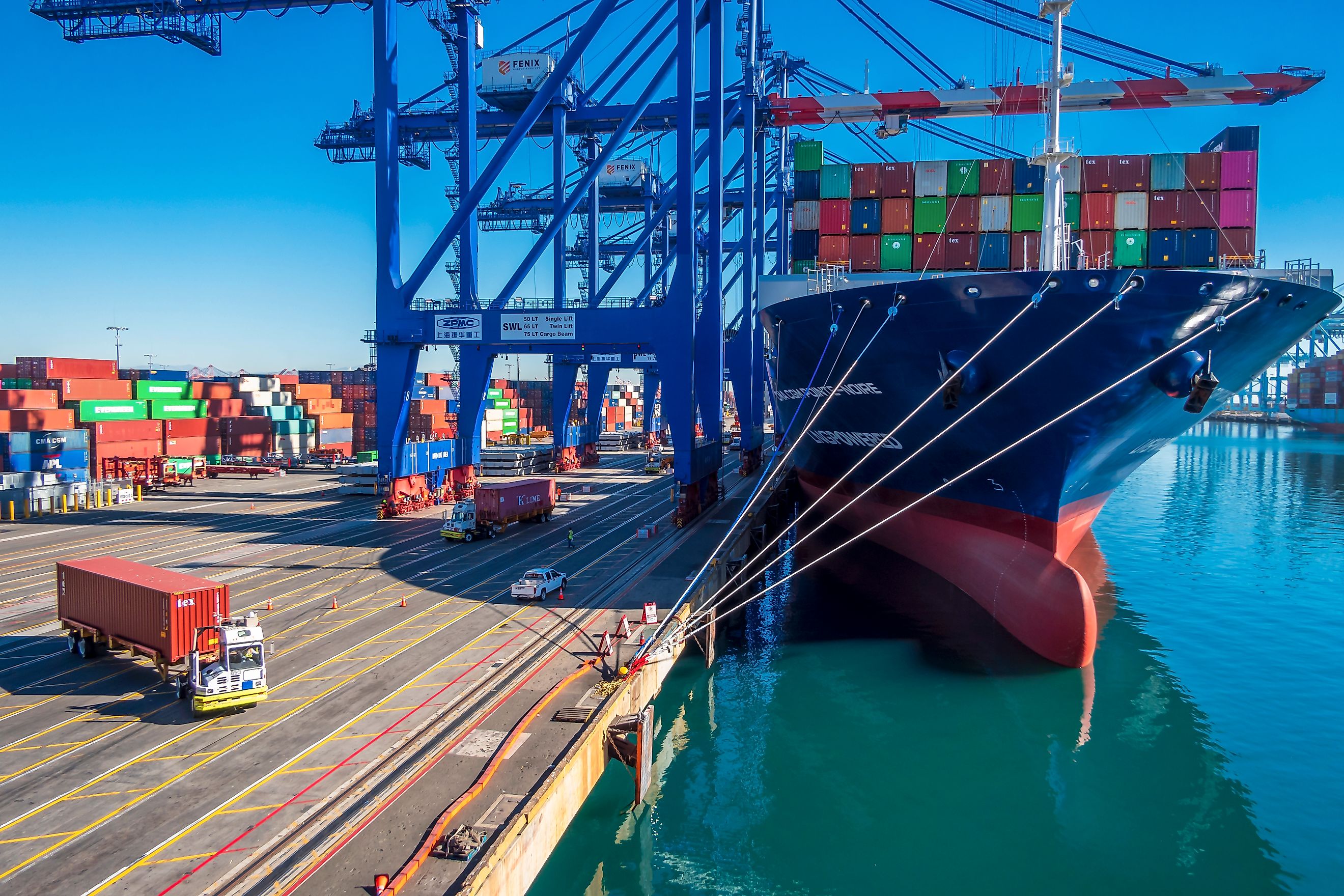
The Largest Shipping Ports in America
America’s economy depends on a vast maritime network that keeps goods moving across global trade routes. Cargo ships glide into massive terminals, cranes sweep across the skyline, and millions of containers shift through ports that act as the country’s commercial gateways. The largest shipping ports in America manage staggering volumes, support countless jobs, and link manufacturers, retailers, and consumers to the world.
Trade patterns shift over time, but a handful of ports consistently anchor the nation’s logistics backbone. Each brings its own history, strengths, and specialty cargo operations. Some excel at handling containerized freight, others dominate in energy transport, and a few operate as all-purpose giants. Together, these ports shape the rhythm of American commerce.
Port of Los Angeles, California
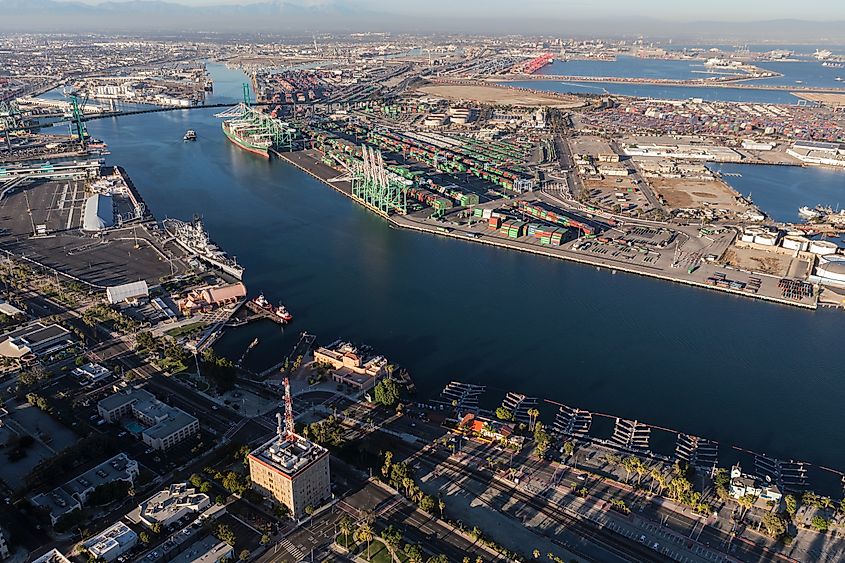
Key strengths:
-
Largest container volume in the United States
-
Strong transpacific trade
-
Advanced environmental standards
-
Extensive multimodal transportation access
The Port of Los Angeles stands as the busiest container port in the nation. Massive gantry cranes tower over a complex web of terminals, rail yards, and distribution centers. Trade with Asia drives much of the port’s traffic, especially through long-standing relationships with major shipping lines based in China, Japan, and South Korea.
Its location on the Pacific coast gives it a prime position for transpacific routes. The port spans thousands of acres and offers deep berths capable of handling the world’s largest container vessels. Environmental initiatives have also become a defining feature, including clean-truck programs and shoreline power systems that reduce emissions.
Cargo at the Port of Los Angeles flows quickly thanks to extensive rail connections, freeway access, and partnerships with local logistics hubs. The scale alone creates an ecosystem that stretches far beyond the harbor.
Port of Long Beach, California
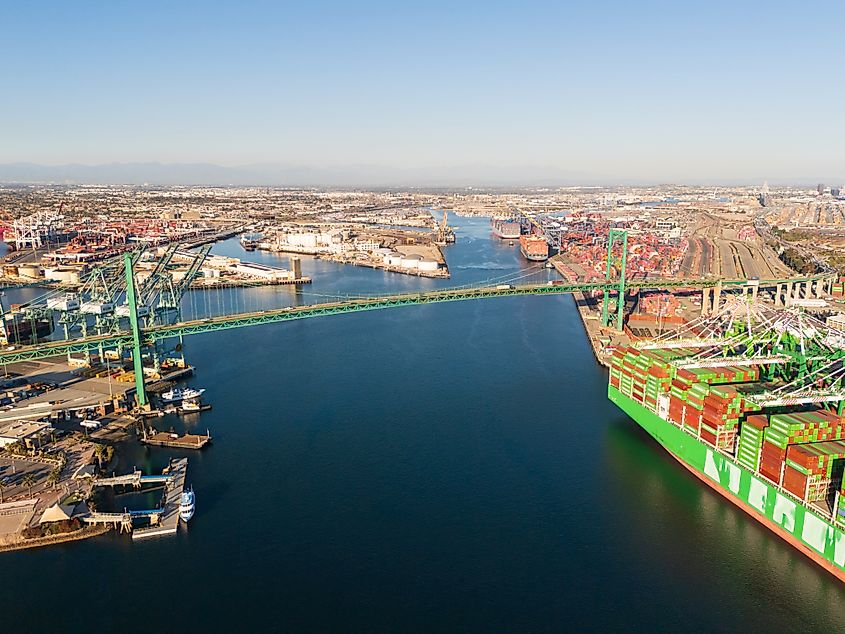
Key strengths:
-
One of the nation’s top two container ports
-
Highly modernized terminals
-
Major hub for Pacific trade
-
Strong focus on sustainability
Next to the Port of Los Angeles sits another giant. The Port of Long Beach handles enormous container volumes and often trades places with Los Angeles for the top national ranking. Together, the two form the nation’s most powerful port complex.
Long Beach operates modern terminals designed for speed and efficiency. The port has invested heavily in automation, on-dock rail facilities, and sustainability projects that reduce emissions across the harbor. Major shipping lines rely on the port as a primary entry point for goods such as electronics, apparel, furniture, and manufactured components.
Large ships move through the harbor daily, supported by a streamlined system built to handle high demand. The port’s efficiency helps maintain steady supply chains, which became especially important during recent global disruptions.
Port of New York and New Jersey
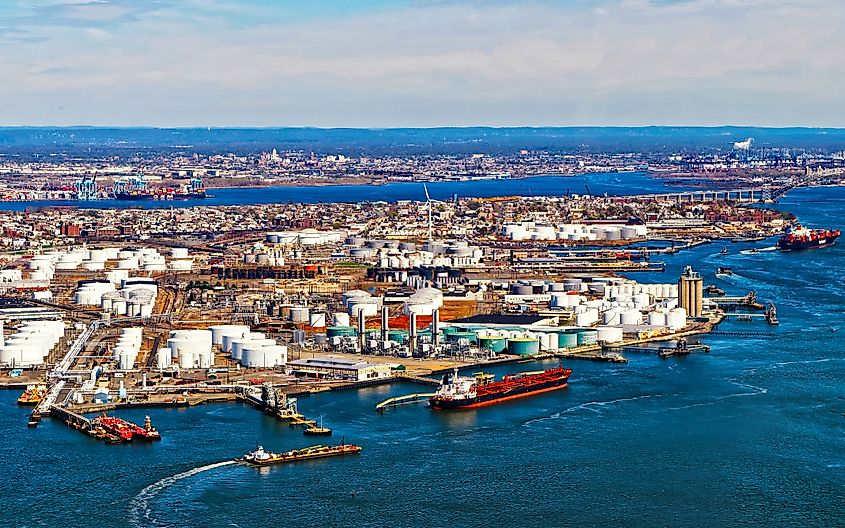
Key strengths:
-
Largest East Coast cargo gateway
-
Multiple major terminals
-
Direct access to dense consumer markets
-
Strong intermodal infrastructure
The Port of New York and New Jersey commands the title of the East Coast’s largest shipping port. Cranes stretch across the skyline, loading and unloading containers that arrive from Europe, Asia, Africa, and South America. Its location near America’s most populous region gives the port access to millions of consumers and businesses.
The port includes several major terminals, including Newark, Elizabeth, Bayonne, and Staten Island. Cargo moves swiftly thanks to deep channels, modern rail systems, and highway access that links the port to inland distribution centers.
Large warehouse complexes have developed throughout northern New Jersey, forming a logistical network that supports everything from e-commerce to food distribution. The port also handles automobiles, bulk cargo, and breakbulk goods.
Port of Savannah, Georgia
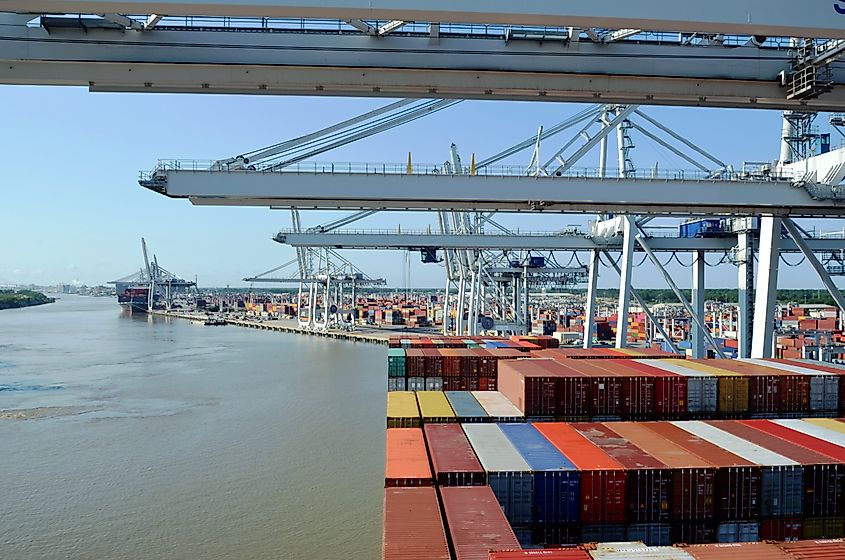
Key strengths:
-
Fastest-growing container port in the nation
-
Expansive terminal capacity
-
Strong inland rail network
-
Key center for manufacturing and agriculture
The Port of Savannah has earned a reputation as one of America’s fastest-growing container ports. Growth stems from a massive terminal complex and a strategic location along the Southeast coast. The Georgia Ports Authority continues to expand capacity, adding berths, cranes, and warehousing space to handle rising demand.
Savannah benefits from growing manufacturing industries across Georgia, South Carolina, and Tennessee. Major automakers and suppliers rely on the port for global shipments, creating a balanced mix of imports and exports. Agricultural goods also pass through Savannah, including cotton, poultry, and refrigerated products.
Efficient rail links help move containers rapidly to inland hubs in Atlanta and the Appalachian region. Major logistics companies have established extensive operations around the port, forming one of the Southeast’s most important trade clusters.
Port of Houston, Texas
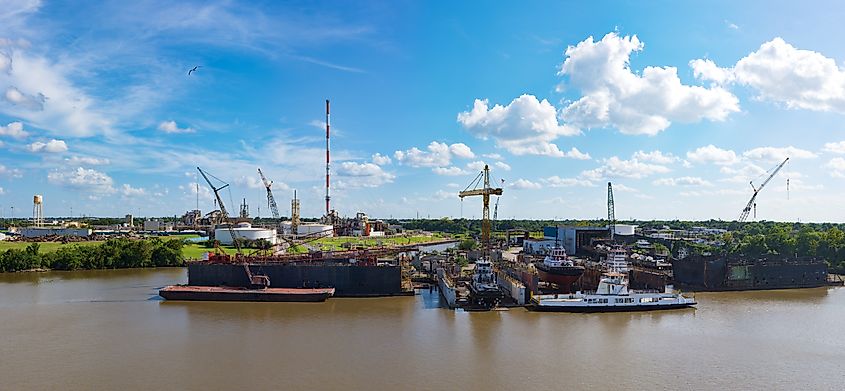
Key strengths:
-
Largest port by tonnage in the nation
-
Major hub for petroleum and chemical exports
-
Highly developed industrial network
-
Strong global connectivity
Oil, natural gas, chemicals, and petroleum products dominate traffic at the Port of Houston, the nation’s busiest port for tonnage. Tankers and barges line the Houston Ship Channel, a 52-mile waterway that serves the heart of America’s energy industry. The port also handles containers, steel, and project cargo, but energy remains the core of its operations.
Refineries and chemical plants cluster throughout the region, turning the area into a major hub for global energy exports. The port supports thousands of jobs and plays a critical role in international energy markets. Infrastructure improvements continue to deepen and widen the channel, allowing larger vessels to move safely through the system.
The port’s location in the Gulf of America gives it broad reach to Latin America, Europe, and Asia. It also serves as a key entry point for materials needed in energy production.
Port of Oakland, California
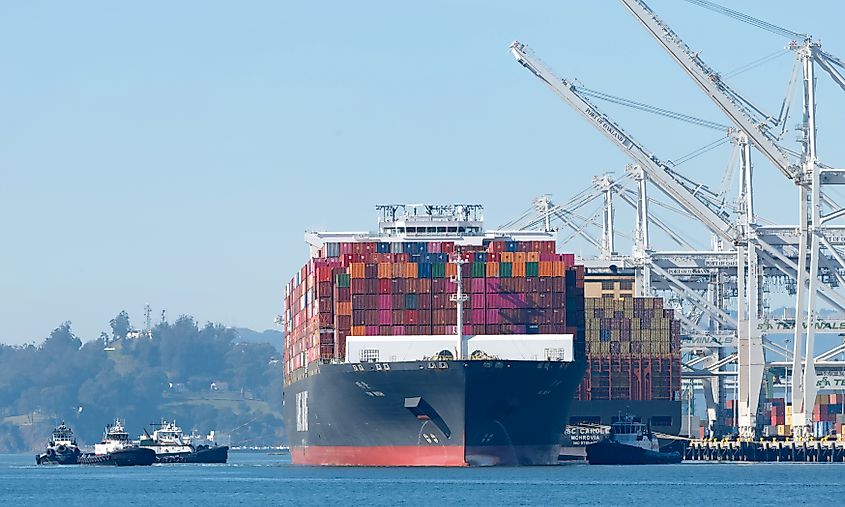
Key strengths:
-
Top port for agricultural exports
-
Strong refrigerated cargo capabilities
-
Balanced import and export flows
-
Growing emphasis on technology and innovation
The Port of Oakland handles a significant portion of America’s agricultural exports. California’s Central Valley produces vast quantities of food, much of which travels through Oakland on its way to Asia and other international markets. Produce, wine, nuts, and refrigerated goods move through specialized terminals designed for temperature-controlled cargo.
A large share of containers at Oakland depart full, a contrast to ports that handle larger import volumes. This balance creates strong export lanes and supports California’s farming industry. Technology upgrades have helped improve efficiency throughout the port, with digital systems that streamline truck appointments and reduce congestion.
Its location near Silicon Valley and the San Francisco Bay Area adds a high-tech dimension to port operations. Logistics startups often test new tools and platforms in Oakland, adding innovation to maritime operations.
Port of Seattle and Port of Tacoma, Washington

Key strengths:
-
Major Pacific Northwest cargo network
-
Strong container operations
-
Robust agricultural exports
-
Binational competition that encourages innovation
The ports of Seattle and Tacoma operate together under the Northwest Seaport Alliance. This partnership creates one of America’s largest cargo gateways, with significant container volumes moving through terminals across both cities.
Trade links with Asia form the foundation of the alliance’s success. Large vessels connect the Pacific Northwest to ports in China, South Korea, Japan, and Vietnam. Agriculture plays an important role as well, with grains, apples, and other regional products shipped through the terminals.
Seattle and Tacoma face stiff competition from Canadian ports, which sit just to the north. Investments in infrastructure help maintain competitive transit times and reliability. The partnership also prioritizes sustainability, including shore power and cleaner cargo-handling technology.
Port of Charleston, South Carolina
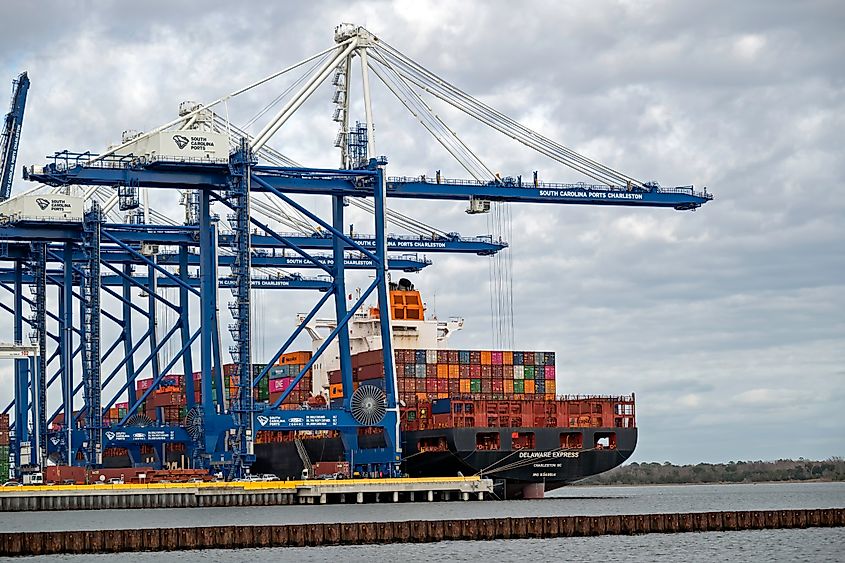
Key strengths:
-
Deep channels that accommodate large vessels
-
Expanding terminal operations
-
Strong mix of imports and exports
-
Key link to growing Southeastern industries
The Port of Charleston continues to climb national rankings thanks to expanded terminals and deep channels that support large container ships. Growth in the Carolinas has boosted demand for imports, including retail goods, electronics, and construction materials. Export traffic is also strong due to regional automotive and aerospace industries.
Charleston benefits from world-class harbor deepening projects that give the port some of the deepest channels on the East Coast. New terminals add capacity and modern equipment that enhance speed and efficiency. Inland ports in Greer and Dillon help extend reach into the interior Southeast.
Historic charm surrounds the harbor, yet the port itself operates as a major force in global trade. Its connection to rising manufacturing in the Carolinas strengthens its position as a top contender among East Coast ports.
Port of Virginia
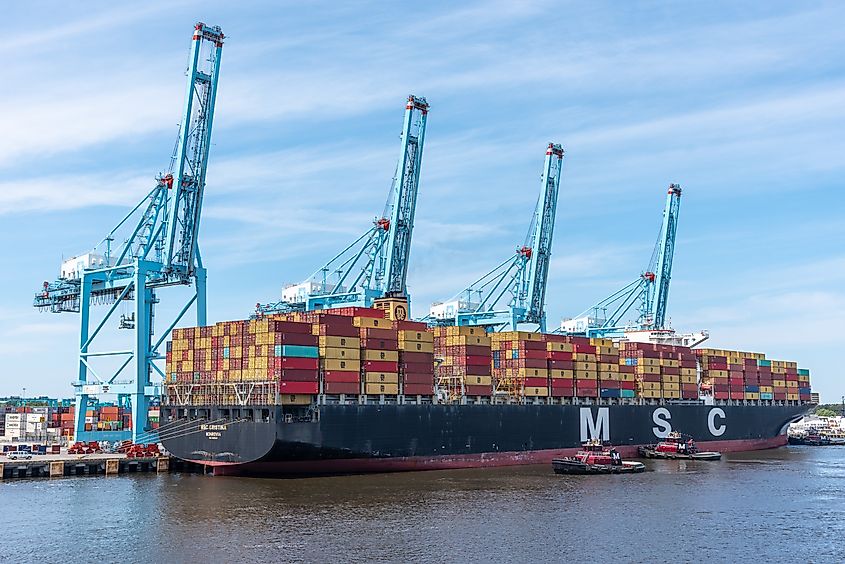
Key strengths:
-
Highly automated terminals
-
Strong rail connections
-
Rapid cargo movement
-
Major Mid-Atlantic distribution center
The Port of Virginia stands out for its high level of automation and efficient terminal systems. Cranes glide across massive yards, guided in part by advanced logistics technology. The port handles millions of containers each year and serves as a key gateway for global trade entering the Mid-Atlantic and Midwest.
Norfolk International Terminals and Virginia International Gateway rank among the most technologically advanced in the country. These facilities support strong cargo movement and reduced congestion. Rail access adds speed, connecting the port to inland hubs in Ohio, Pennsylvania, and beyond.
Growth in e-commerce has strengthened the port’s role as a distribution hub. Warehouses and logistics centers across the region rely on fast, predictable cargo movement.
The Ports That Keep the Country Moving

America’s largest ports influence everything from grocery prices to manufacturing timelines, acting as vital hubs for jobs, supply chains, and transportation networks. Global disruptions can create instant ripple effects, which makes strong performance and steady operations crucial. Ongoing investment in technology, sustainability, deeper channels, and better rail access helps these ports handle bigger ships and evolving trade patterns.
Together, the major ports form a network built on innovation and geographic reach. Some specialize in containers, others in energy or agriculture, yet all support millions of jobs and keep goods moving nationwide. Cargo ships may feel distant from everyday life, but their cargo shapes the country’s economy. These ports anchor that flow and keep American commerce in motion.







